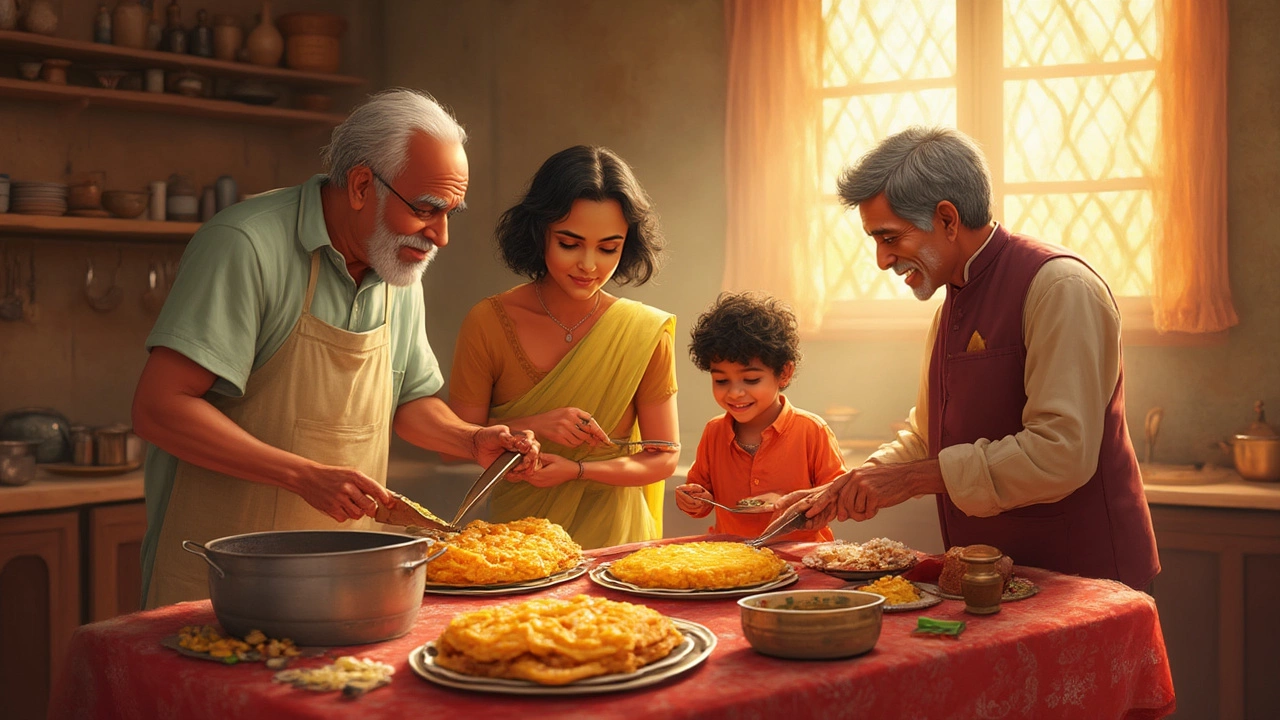
Discover Gujarat's National Food: The Story and Flavors of Dhokla
Uncover why dhokla is called the national food of Gujarat, its origins, recipes, regional twists, and facts that make it an unforgettable part of Gujarati culture.
When you hear "traditional food" you probably picture a steaming plate of dal, a buttery roti, or a sweet pile of gulab jamun. Those images are right, but there’s a lot more to explore. India’s food heritage stretches over centuries, blends dozens of cultures, and lives in kitchens from Delhi to Darjeeling. This guide gives you the basics you need to recognize, appreciate, and enjoy the real flavors that define Indian tradition.
First, forget the idea that all Indian food is the same. Every state, even every district, has its own staple grains, spices, and cooking methods. That diversity is the reason a plate of masala dosa from Karnataka feels completely different from a bowl of poha in Madhya Pradesh. Knowing the regional roots helps you pick dishes that truly represent local life.
A traditional dish usually meets three simple criteria: it’s been passed down for generations, it uses locally available ingredients, and it plays a role in cultural rituals or daily routines. For example, chapati is a daily staple in many homes because wheat grows locally and the flatbread can be cooked quickly on a hot griddle. Similarly, the Gujarati snack dhokla is tied to festivals and family gatherings, making it both a comfort food and a celebration item.
Another key point is that traditional recipes rarely change dramatically. You might see a family add a pinch of a new spice, but the core method stays the same. That stability keeps the taste profile recognizable even when you travel from one town to another.
North India: Think buttery paneer tikka, aromatic biryani, and the ever‑popular butter chicken. These dishes often feature dairy, wheat, and rich gravies. If you’re in Punjab, a plate of sarson da saag with makki di roti showcases the region’s love for mustard greens and cornmeal.
West India: Gujarat’s street food scene offers dhokla, fafda, and the tangy sev usal. In Rajasthan, you’ll find dal baati churma – a hard wheat ball served with lentils and sweet cracked wheat. Both regions lean on millets, gram flour, and spices like cumin and coriander.
South India: Dosas, idlis, and sambar dominate breakfast tables. In Kerala, fish curry with coconut milk reflects the coastal bounty. The South also loves rice‑based dishes, from plain steamed rice to flavorful lemon rice.
East India: Bengali cuisine brings you fish paturi, mishti doi, and the iconic puchka (known elsewhere as pani puri). Rice, mustard seeds, and poppy seeds are everyday ingredients, giving the food a distinctive sharpness.
Across all regions, you’ll find that sweets hold a special place. From the ghee‑rich laddus of the North to the jaggery‑laden payasam of the South, desserts often mark festivals, weddings, and family celebrations.
When you try any of these dishes, pay attention to the small details: the crackle of tempering spices in hot oil, the aroma of fresh herbs, and the texture that comes from slow cooking. Those cues tell you why the dish earned its “traditional” label.
Ready to taste the heritage? Start with a simple recipe you can make at home – a basic dal with turmeric, cumin, and a splash of lemon. It’s a quick way to experience the comfort that millions of Indians grow up with. From there, explore street stalls, family-run dhabas, and regional festivals. Each bite will teach you a little more about the culture that created it.
Traditional food isn’t just about flavor; it’s a living link to history, community, and identity. By trying these classic dishes, you join a conversation that’s been happening around Indian tables for centuries. So grab a fork, dig in, and let the taste of tradition guide you.

Uncover why dhokla is called the national food of Gujarat, its origins, recipes, regional twists, and facts that make it an unforgettable part of Gujarati culture.